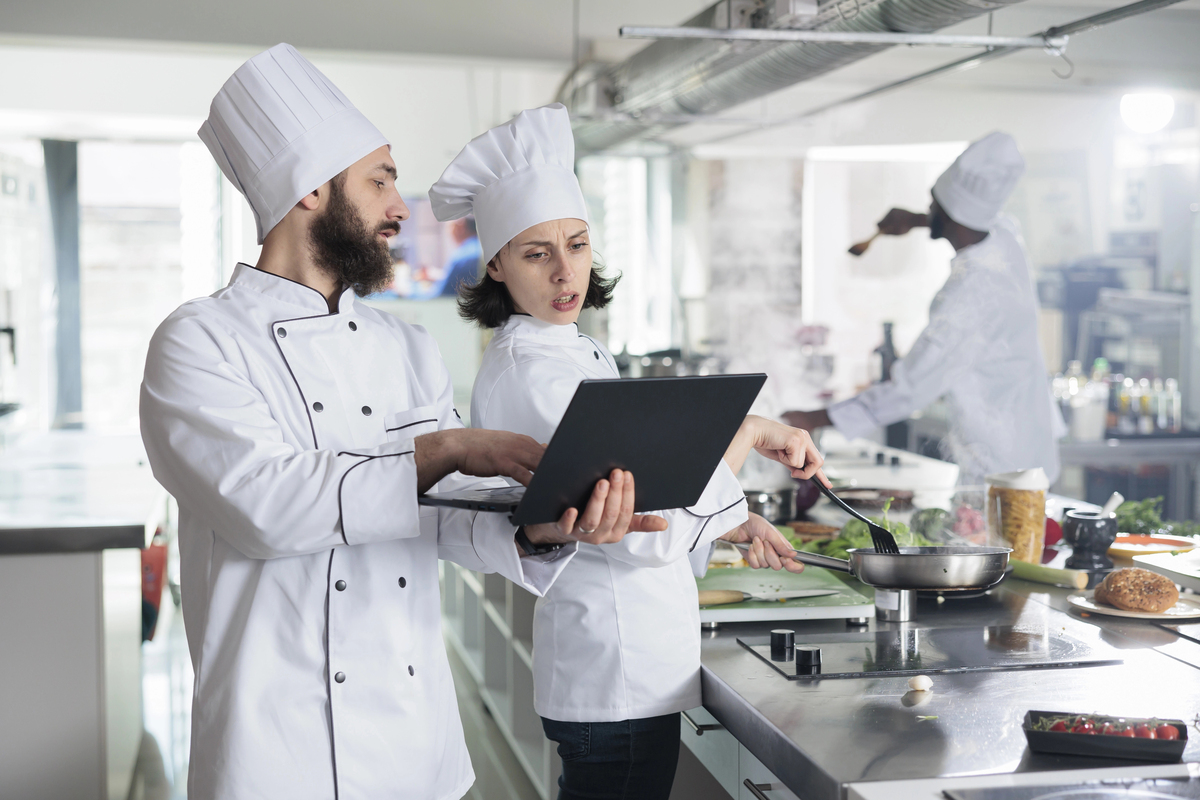15 Unexpected Ways Chefs Are Using AI to Create Dishes
Artificial intelligence is reshaping kitchens worldwide, introducing creativity and efficiency in surprising ways. Chefs are experimenting with AI tools to reimagine ingredients, flavors, and presentations, creating once unimaginable dishes.
These innovations blend technology with culinary arts, resulting in unique experiences for diners. AI doesn’t just make cooking faster—it inspires chefs to think differently and push boundaries in ways they never thought possible.
Inventing New Flavor Combinations

AI algorithms analyze thousands of recipes and flavor profiles to discover combinations chefs haven’t tried before. This helps them pair ingredients that seem unrelated, like chocolate and blue cheese, creating exciting and unexpected dishes.
Restaurants use these combinations to stand out, offering unique menus that keep diners curious. AI tools save chefs time, allowing them to focus on perfecting the dish. This process is turning meals into adventurous experiences.
Perfecting the Art of Plating

Chefs use AI to design intricate plate presentations by analyzing the aesthetics of thousands of famous dishes. These tools suggest layouts that maximize visual appeal, making each plate a work of art.
With AI’s help, chefs can balance colors, textures, and portions to create a stunning dish. Restaurants use this technology to enhance the dining experience visually. The result is plates that look as good as they taste.
Creating Sustainable Menus

AI helps chefs reduce food waste by suggesting recipes that utilize every part of an ingredient. It can recommend how to use vegetable peels, fish bones, or stale bread in creative and delicious ways.
Chefs use this technology to design sustainable menus that align with eco-conscious dining trends. Restaurants benefit from reduced costs while appealing to environmentally aware customers. AI makes sustainability easier without sacrificing quality.
Reimagining Traditional Dishes

AI breathes new life into traditional recipes by suggesting modern twists. Chefs input classic dishes, and AI provides innovative ingredients or techniques to enhance them. This approach lets chefs maintain tradition while keeping their menus fresh and exciting.
For example, an AI might suggest using molecular gastronomy to elevate a family recipe. This fusion of old and new delights diners with a sense of nostalgia and novelty.
Personalizing Dining Experiences

Chefs use AI to tailor dishes to individual preferences, such as spice levels, allergies, or dietary needs. Customers provide their preferences, and AI recommends adjustments to recipes or alternative ingredients.
This technology ensures everyone gets a dish they’ll love without compromising flavor or quality. It also simplifies the process for chefs managing diverse dietary requirements. Personalization makes dining experiences feel more intimate and thoughtful.
Experimenting with Rare Ingredients

AI helps chefs explore rare and underutilized ingredients by analyzing how they perform in recipes. It suggests cooking methods and pairings, giving chefs the confidence to try something new.
This innovation introduces diners to flavors and textures they might never have experienced. It also promotes biodiversity by encouraging the use of non-traditional crops. AI opens doors to a world of culinary possibilities.
Mastering Regional Cuisines

Chefs use AI to learn about regional cuisines they may not be familiar with. By analyzing traditional recipes, AI provides insights into key flavors, ingredients, and techniques from different cultures.
This allows chefs to create authentic dishes without traveling to those regions. It also inspires creative fusion dishes that blend cuisines in exciting ways. AI helps chefs expand their horizons and celebrate global diversity.
Generating Plant-Based Alternatives

AI supports chefs in creating plant-based versions of popular dishes. It analyzes textures, flavors, and nutritional profiles to suggest substitutes for meat, dairy, and eggs. Chefs use this guidance to develop vegan dishes that mimic the taste and feel of traditional recipes. This technology helps meet the growing demand for plant-based dining. It ensures these dishes are delicious and satisfying for all diners.
Designing Unique Cocktails

AI isn’t limited to food—it’s transforming drink menus too. Chefs and mixologists use it to craft cocktails with unusual flavor pairings. AI can suggest unique ingredients, like herbs or spices, to enhance classic drinks.
These creations become conversation starters for diners. The precision of AI ensures balanced flavors, elevating the overall dining experience. Restaurants gain an edge by offering unforgettable beverages.
Automating Recipe Development

AI tools analyze trends, customer reviews, and seasonal ingredients to suggest new recipes for menus. This helps chefs keep up with evolving food trends while maintaining originality. The technology streamlines the brainstorming process, saving time for experimentation. Restaurants can regularly update menus with exciting options that reflect current tastes. AI transforms menu planning into an efficient and creative process.
Enhancing Food Photography

Chefs use AI to perfect their food photos for social media or cookbooks. The technology analyzes lighting, angles, and composition to make dishes look more appetizing. This ensures that photos capture the full beauty of the food, enticing potential customers. Stunning visuals help restaurants attract diners and promote their offerings effectively. AI makes food photography as important as the dish itself.
Identifying Food Trends

AI monitors social media, restaurant reviews, and dining habits to predict emerging food trends. Chefs use this data to stay ahead of the curve, incorporating trending ingredients or styles into their menus. This insight keeps restaurants relevant and exciting for diners. By understanding trends early, chefs can innovate before competitors. AI acts as a crystal ball for the culinary world.
Improving Food Safety

AI assists chefs in monitoring food storage conditions, ensuring ingredients stay fresh and safe. It can track temperature, humidity, and expiration dates with precision. This reduces the risk of foodborne illnesses and waste. Restaurants use AI to maintain high safety standards without adding extra workload. It builds trust with diners by prioritizing their well-being.
Teaching Aspiring Chefs

AI-powered tools provide step-by-step guidance to aspiring chefs, helping them learn new techniques. These virtual assistants offer personalized feedback, making culinary education more accessible. Professional chefs also use AI to refine their skills and explore new ideas. The technology democratizes knowledge, allowing anyone to master the art of cooking. AI transforms kitchens into classrooms for creativity.
Creating Multi-Sensory Experiences

Chefs use AI to design dishes that engage all the senses, not just taste. It analyzes how colors, textures, and even sounds influence the dining experience. For example, AI might suggest serving a dish with a specific type of music to enhance flavors.
These multi-sensory creations turn meals into immersive events. Restaurants gain loyal customers who remember these one-of-a-kind experiences.
20 Foods No One Can Afford Anymore Due To Inflation

With the ever-rising living costs, some foods have become luxury items that only the wealthiest can afford. From exotic delicacies to once-affordable staples, the price hikes have made certain foods out of reach for the average consumer.
20 Foods No One Can Afford Anymore Due To Inflation
15 Ways to Shop Successfully On A Shoestring String Budget

In today’s economy, finding ways to stretch your budget while enjoying what you love is more important than ever. Whether you’re a savvy shopper looking to make the most of your hard-earned money or someone who enjoys the thrill of finding a great deal.







